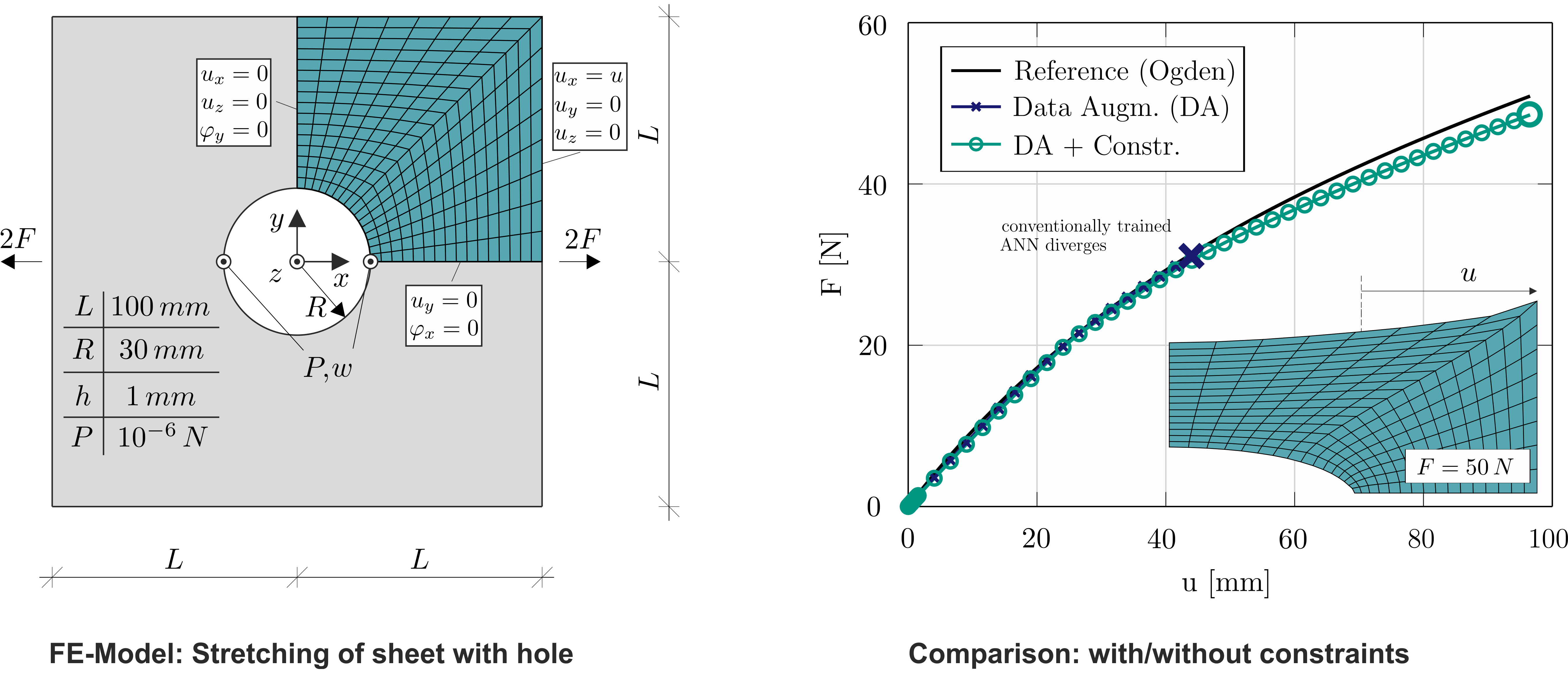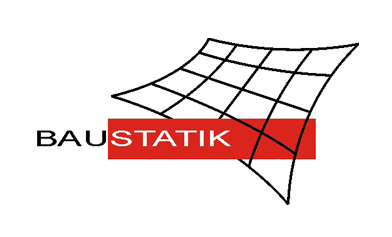Training of artificial neural networks for material modeling using physical constraints
A modern material modeling approach is the training of an artificial neural network (ANN) using experimental data. This ANN can be applied, for example, as a stress-strain relationship in a finite element (FE) program. However, the advantage of this flexibility is countered by a large amount of necessary experimental data and by neglecting basic physical properties. This leads in the last consequence also to a bad convergence behavior in FE calculations. One possibility to tackle both problems is to consider physical constraints during the ANN training. For example, energy conservation, material symmetries, and stability can be weakly enforced in this minimization problem without changing the ANN topology or affecting its application in the FE calculation. ANNs trained in this way require less training data and show better convergence behavior than conventionally trained networks.
 |
Literature
Weber, P.; Geiger, J.; Wagner, W.:
Constrained neural network training and its application to hyperelastic material modeling,
Computational Mechanics, 68, 1179–1204, 2021,
https://doi.org/10.1007/s00466-021-02064-8
Weber, P.; Wagner, W.; Freitag S.:
Physically enhanced training for modeling rate-independent plasticity with feedforward neural networks,
Computational Mechanics, 72, 2023, pp. 827 – 857
https://doi.org/10.1007/s00466-023-02316-9
Contact Person
M.Sc. Patrick Weber

